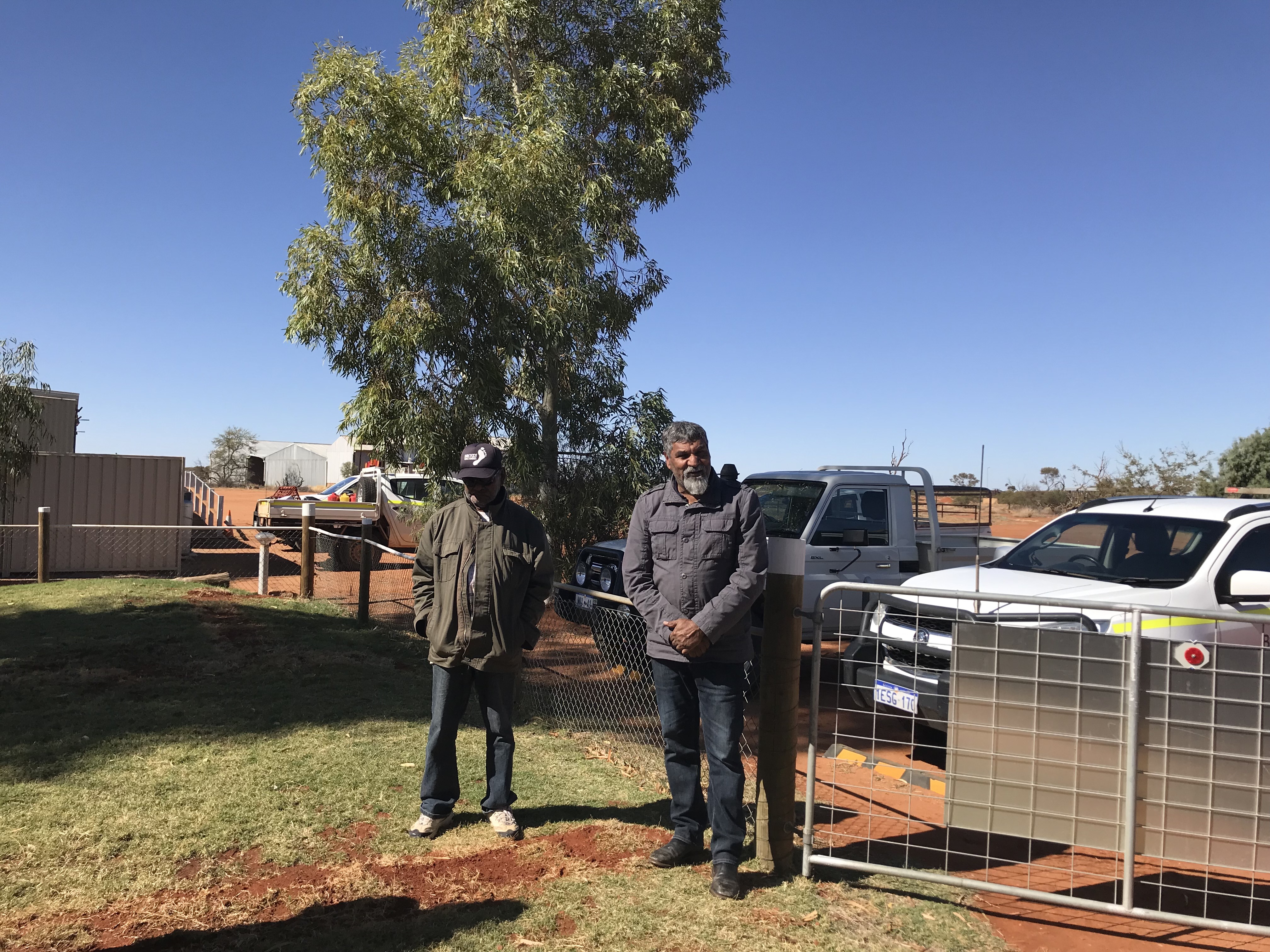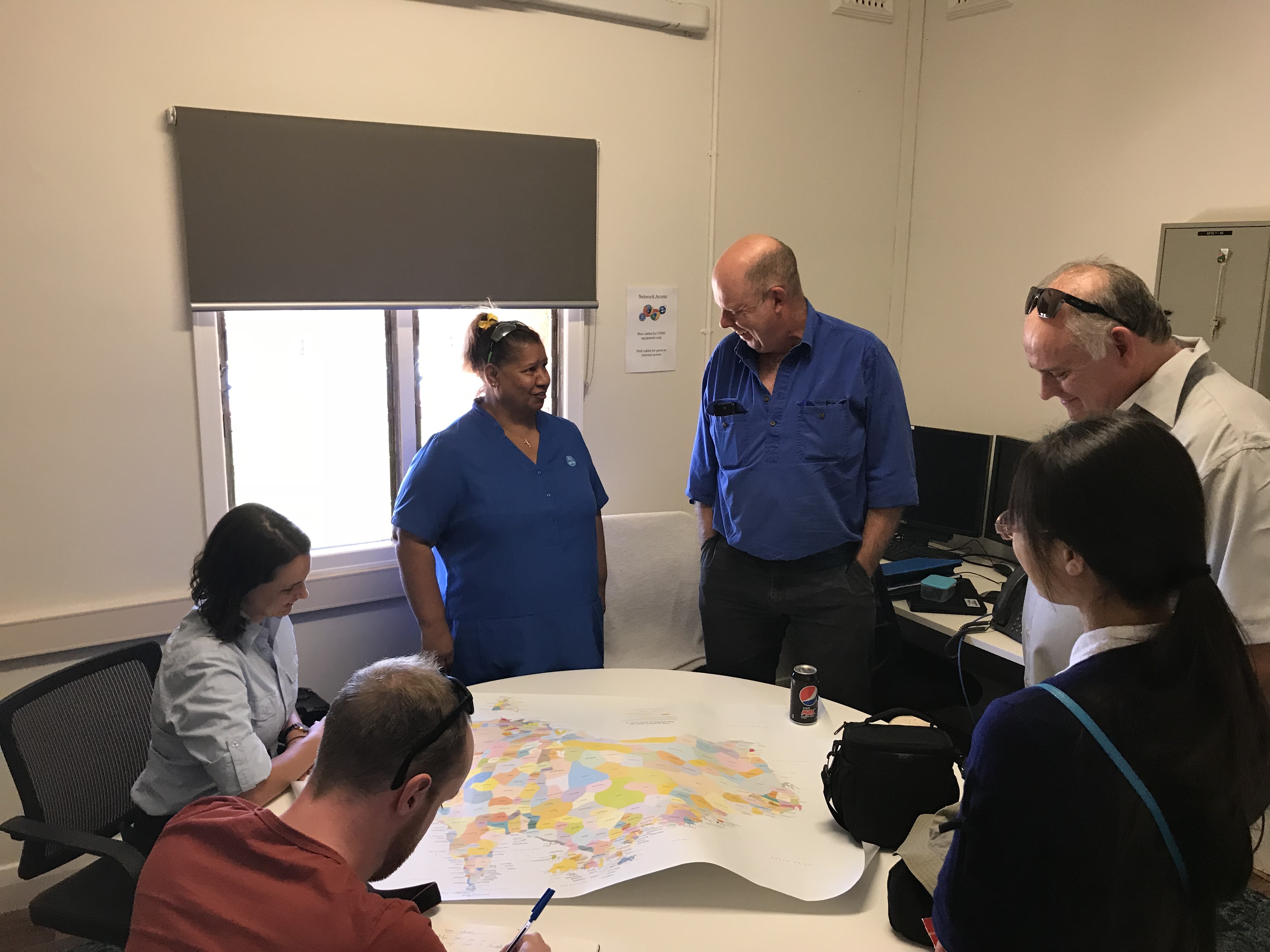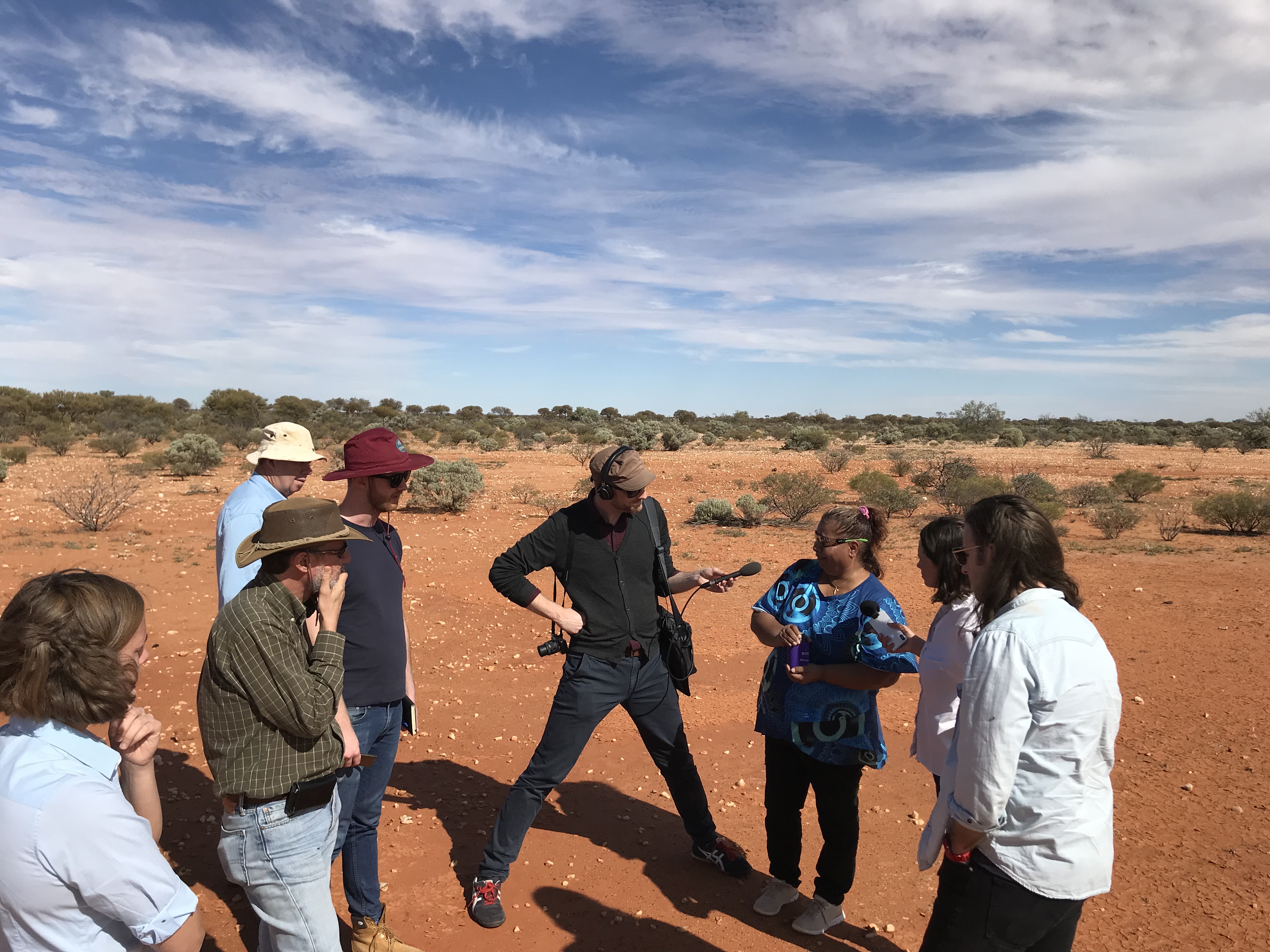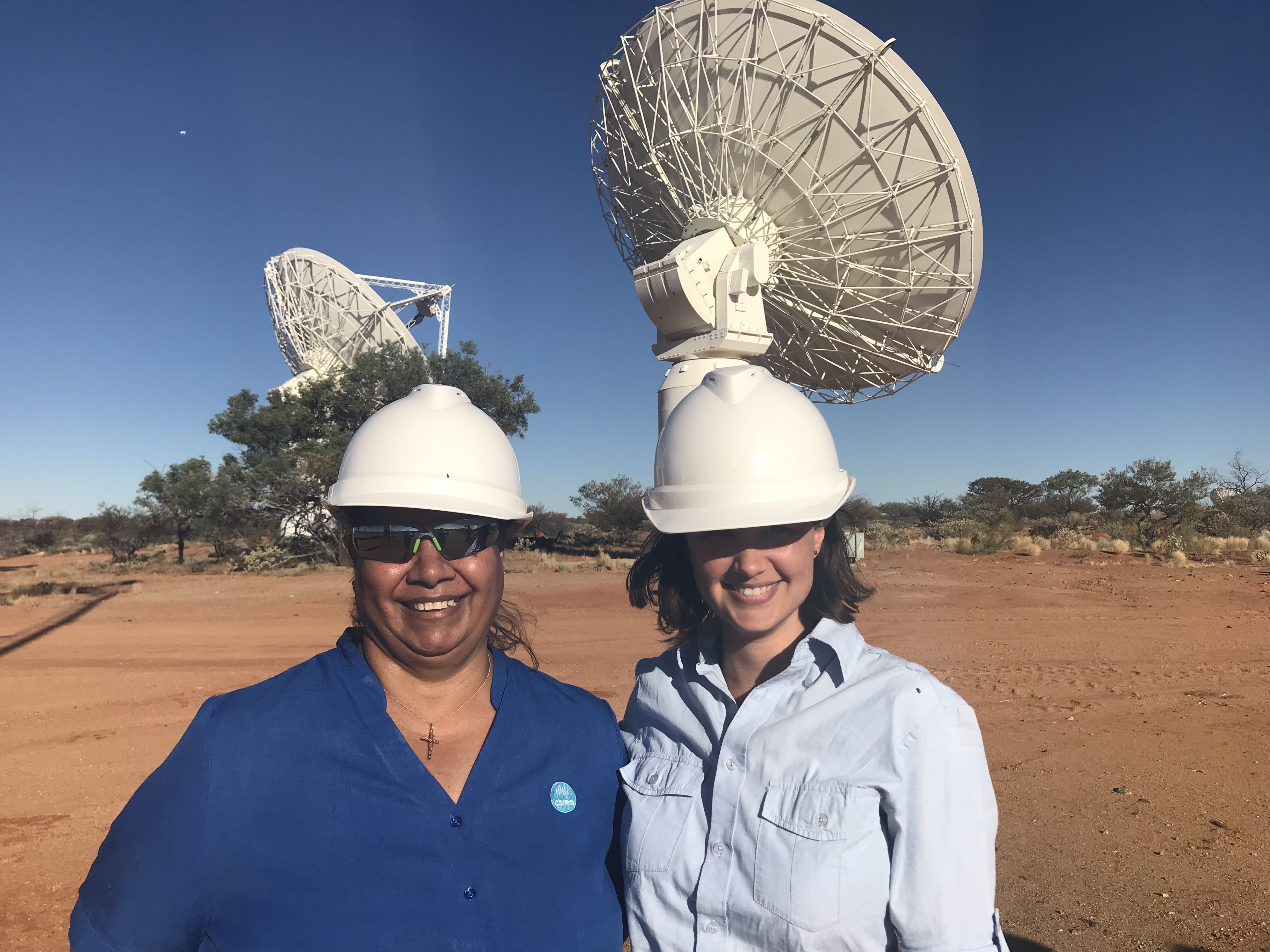Celebrating National Reconciliation Week, 2018
This year during National Reconciliation Week all Australians are being invited to learn more about Aboriginal and Torres Strait Islander cultures and histories. Here at CSIRO’s Australian Telescope National Facility (ATNF) we have been working closely with the Wajarri people as part of establishing the site for our new Murchison Radio-astronomy Observatory (MRO) in outback Western Australia. Here we share a snapshot of Wajarri history through the story of their struggle to access education during the 1900’s. We celebrate the Wajarri native title determination of 2017, fill you in on the MRO Indigenous Land Use Agreement and take a look at how CSIRO works with the Wajarri today, to ensure every visitor takes away not only a thing or two about radio astronomy but some knowledge of the history and culture of the ancient land on which we operate our Australian Square Kilometre Array Pathfinder (ASKAP) radio telescope and related facilities.
Wajarri access to education
Throughout the 1900’s Aboriginal children faced significant barriers to education and many Wajarri families in the Murchison region lived and worked on remote pastoral stations, making access to education even more challenging. In 1910 Aboriginal children were excluded from the local State school in Mullewa and although a teacher’s strike in 1920 led to some improvements to access, Aboriginal children were still excluded from schools if parents of other children objected to their attendance. Wajarri historians report that the last Aboriginal child in the Murchison region to be excluded from school on 'health and hygiene rules' occurred at Watheroo in 1954.
By the 1960s Yalgoo and Cue government Hostels for Aboriginal students opened and there was a drift to towns as ‘station women’ brought their children to be educated. ‘Menfolk’ still moved between stations seeking work and by this time most Aboriginal children on pastoral stations were being sent to missions for their education. During this period there were many reports of Aboriginal children being punished for using their language at the missions.
In the 1980s a downturn in the pastoral industry limited employment and the remainder of the Aborigines on the stations moved to town. Meanwhile, there was a significant cultural and political shift that led to major changes to education and attitudes towards language and culture:
- Aboriginal education workers were employed in some Western Australia (WA) schools:
- Aboriginal community schools were established in several regions;
- Pia Reserve** was vacated by the Boolardy Pastoral Co. and re-established as an Aboriginal reserve; and
- Language centres were set up in some regions, with traditional language being taught in some schools.
In 2008 Wajarri became the first Australian Aboriginal language available at senior secondary level in Western Australia. Here’s a Wajarri dictionary app that was developed by the Irra Wangga (Geraldton Language Programme). Quick tip: The word for 'man' in Wajarri is Yamaji (sometimes spelt Yamatji).
Wajarri native title determination
In October 2017, the Wajarri Yamaji received legal recognition of their land and culture from the Federal Court of Australia. The Court’s Consent Determination covers the majority of the Wajarri Yamaji claim area (68,743 square kilometres of the total 97,676 square kilometres). It encompasses parts of the Shires of Meekatharra, Mount Magnet, Murchison, Upper Gascoyne, Cue and Yalgoo, as well as 56 pastoral leases.
The journey to this native title determination commenced in 1995 and in a media release circulated at the time of the Determination, the Wajarri Organising Committee stated; “This native title determination is a historic day for the Wajarri people. It recognises our connection to our Country (barna) that has existed since long before European colonisation. We have always known where we come from, but this determination means that our connection to our barna is recognised by Australian law.”
His Honour, Justice Griffiths said, “This is a historic day. After more than 20 years we gather together today at Wooleen Station to recognise the native title rights and interests of the Wajarri Yamatji in this land. I warmly congratulate everyone who has been involved in bringing this part of the native title claim to a positive outcome.”
Establishing CSIRO’s Murchison Radio Astronomy Observatory - ILUA
The MRO is an area of approximately 120 sq km excised from the Boolardy pastoral lease as a new diversified use lease in 2009, to enable the construction of The Australian Square Kilometre Array Pathfinder (ASKAP) telescope, The Murchison Widefield Array (MWA) and The Experiment to Detect the Global Epoch of Reionization Signature (EDGES).
During the establishment of the MRO, multiple state and federal government and Wajarri stakeholders came together, to formulate an Indigenous Land Use Agreement (ILUA). This agreement allows the Australian Square Kilometre Array Pathfinder (ASKAP) telescope, the Murchison Widefield Array (MWA) and EDGES, to operate on the MRO. In exchange the Wajarri Yamaji receive a combination of monetary and non-monetary benefits aimed at providing long term benefits to the community. Some examples of the non-monetary benefits include:
- Provision of a VSAT satellite link from Pia Wadjarri Community to support internet connectivity;
- CSIRO organises and funds visits by the PIA School to the MRO at least once per calendar year; and combines that with astronomy and other science education activities;
- Procurement and contracting opportunities at the MRO for Wajarri companies;
- Naming rights for telescopes, buildings and places on the MRO;
- Acknowledgement of the Wajarri in scientific publications; and
- CSIRO employs an Aboriginal Liaison Officer in Geraldton – currently Ms Leonie Boddington.
Welcome to Country
As part of the ILUA, Wajarri elders are informed of all VIP guests who are planning to visit the MRO and they are invited to perform a traditional welcome to country. During National Reconciliation Week, CSIRO hosted some journalists at the MRO for a site tour and Anthony Dann, Wajarri Elder, welcomed them upon arrival.

Anthony Dann and Edward ‘Tedo’ Ryan, Wajarri Elders welcoming visitors to the MRO
CSIRO’s Indigenous Liaison Officer Leonie Boddington
Leonie Boddington is CSIRO’s Indigenous Liaison Officer (ILO), based at CSIRO’s Murchison Support Facility (MSF) in Geraldton. Leonie works within the CSIRO team to support the commitments under the ILUA. Leonie provides Heritage Inductions for all visitors to the MRO, she also engages with the CSIRO team to provide outreach to Wajarri Yamaji about CSIRO’s radio astronomy related activities and provides advice to CSIRO staff on Wajarri cultural matters.
Last week Leonie provided heritage inductions to the journalists visiting the MRO, she also liaised with Wajarri elder, Anthony Dann, who performed a Welcome to Country and assisted in the co-ordination of a new series of Heritage ‘walk-overs’ as part of the establishment of the SKA.

Leonie Boddington provides the group with a heritage induction before the visitors tour the MRO
(L to r) Liam Mannix (Fairfax), Rae Johnston (Gizmodo), Leonie Boddington, Huw Morgan (CSIRO), Professor David Davidson (Curtin), Miss Stella (Yan) Huang (Chinese Academy of Sciences)

Leonie talks to the journalists at the proposed site for the SKA1-Low telescope during a tour of CSIRO’s MRO
(l to r) Prof. Lisa Harvey-Smith (CSIRO), Antony Schinckel (CSIRO), Liam Mannix (Fairfax), Huw Morgan (CSIRO), Jonathan Webb (ABC), Leonie Boddington, Rae Johnston (Gizmodo), Ben O’Shea (The West Australian).

Leonie Boddington with journalist Rae Johnston
